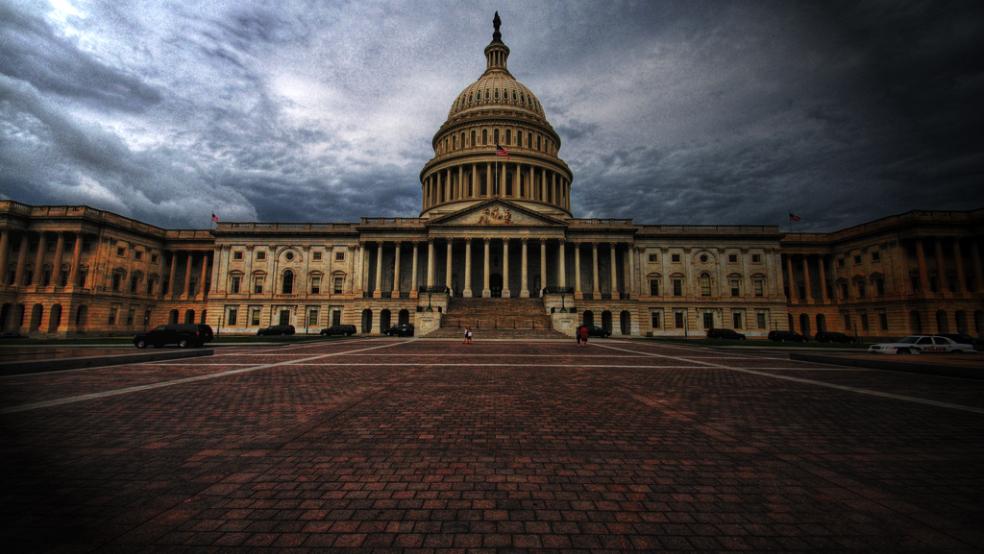Former Florida governor Jeb Bush readily acknowledges his passion for government reform. Last April he gushed, "I'm nerdy enough to actually think that’s one of the coolest challenges you could ever imagine,” according to a tweet by a Miami Herald reporter.
Government reform almost never makes the cut as an issue during a presidential campaign. Barack Obama didn’t make reform or innovation of government institutions a central plank of his 2008 and 2012 campaigns, and it’s unlikely that few other than Bush will make a big deal of it during their run in 2016.
“Neither institutional innovation nor its fraternal twin, institutional reform, is likely to catch voter fancy,” noted William A. Galston, a former domestic policy adviser to President Bill Clinton and a political scholar with the Brookings Institution.
“Both sound too much like yawn-inducing ‘government reorganization,” Galston and his associate, Elizabeth H. McElvein, wrote in a Brookings blog post last week. “When asked what the next president should do, issue experts and political pundits are far more likely to respond with lists of proposed policies, themes and narratives.”
Yet, it would be a huge mistake to neglect institutional innovation, they wrote, especially when – as in the case of today – “existing institutions are failing to address the most serious issues of the day and are falling in the public’s esteem.”
Related: The Federal Tech Mess is Costing Taxpayers Billions
The need for a serious discussion by Republican and Democratic presidential aspirants couldn’t be greater.
In highlighting the ongoing crisis in government last February, The Fiscal Times wrote, “The federal government is a rudderless behemoth – a massive, $3.7 trillion a year enterprise that is struggling to come to grips with a fast changing society, mind-boggling innovations in technology and business practices, and growing public impatience with bureaucratic ineptness, waste and corruption.”
Galston and McElvein spent five years exploring the problems of a dysfunctional government and contemplating the institutional reforms that might somehow turn things around.
One lesson they quickly learned was that galvanizing Congress and the executive branch to make needed changes is extremely difficult, because the “default setting of every form of government” is the status quo. “Overcoming resistance and simple inertia is hard,” they wrote, “all the more so because what exists is real and familiar while the proposed change is imagined and novel, unfamiliar and therefore threatening.”
Related: 5 Government Reforms That Could Save Billions
“Although the details vary, it always takes energy and sustained commitment to move the status quo,” they added.
Over the years, government reform has come in all sorts of packages, from relatively small-bore fixes of existing agencies like the Department of Veterans Affairs, the Secret Service or the Internal Revenue Service, to far more ambitious overhauls of agencies or even the creation of new ones.
More fundamental restructuring or cutting edge innovation is much harder to achieve, and often it takes a cataclysmic event – such as the 9-11 attacks on the U.S. or the collapse of the housing market or banking system.
Related: Why Obama’s Pitch for Government Reform Hit a Wall
Yet those innovations driven by dramatic events throughout history have had the most profound and lasting impact on the government and society, Galston and McElvein suggest. This is why they focused on what they described as “the kind of change that leads to the creation of new institutions rather than to the reform of existing ones.”
“The focus of the paper is on a specific kind of change, mainly innovation – creating something new that didn’t exist before,” Galston explained in an interview. “The issue of institutional change was far too broad to take on in single paper, and so the focus of this paper was on circumstances that seemed to require something brand new to step into a policy space and deal with it in a new way appropriate to the circumstances.”
Among the case studies they used to illustrate their point:
- The creation of the Federal Deposit Insurance Corporation (FDIC), a classic example of institutional innovation undertaken under extreme pressure – namely the threatened collapse of the nation’s entire banking system.
- The creation of the Department of Homeland Security – a major consolidation of law enforcement and immigration agencies undertaken in the shadow of the worst terrorist attack on U.S. soil in modern times.
- The creation of the Environmental Protection Agency (EPA), which represents an incubated institutional innovation.
- The creation of Federal Reserve System, which they described as an intermediate case that stands between the rapid, crisis-driven, consensual adoption of the FDIC and the much slower, bottom-up process that preceded the EPA.
- The National Security Act of 1947 –which responded to persistent problems and in the process established the post-war institutional architecture for intelligence, the military services, and national security policy-making.
Related: Smart Tax Reform Has to Account for This Massive Change
“There is no single road to success for acute government innovations,” Galston and McElvein concluded. “Some reforms respond to acute problems at moments of crisis, while others seize windows of opportunity to address persistent problems. Some reflect the pressure of public opinion, while others are driven by consortia of insider experts and elected officials.”
One obvious caveat, however: Creating new, innovative agencies might be a wise course; but allowing existing, moribund agencies to continue unchallenged leads to government bloat, wasted taxpayer dollars and ultimately an unsustainable federal government.
Top Reads from The Fiscal Times:




